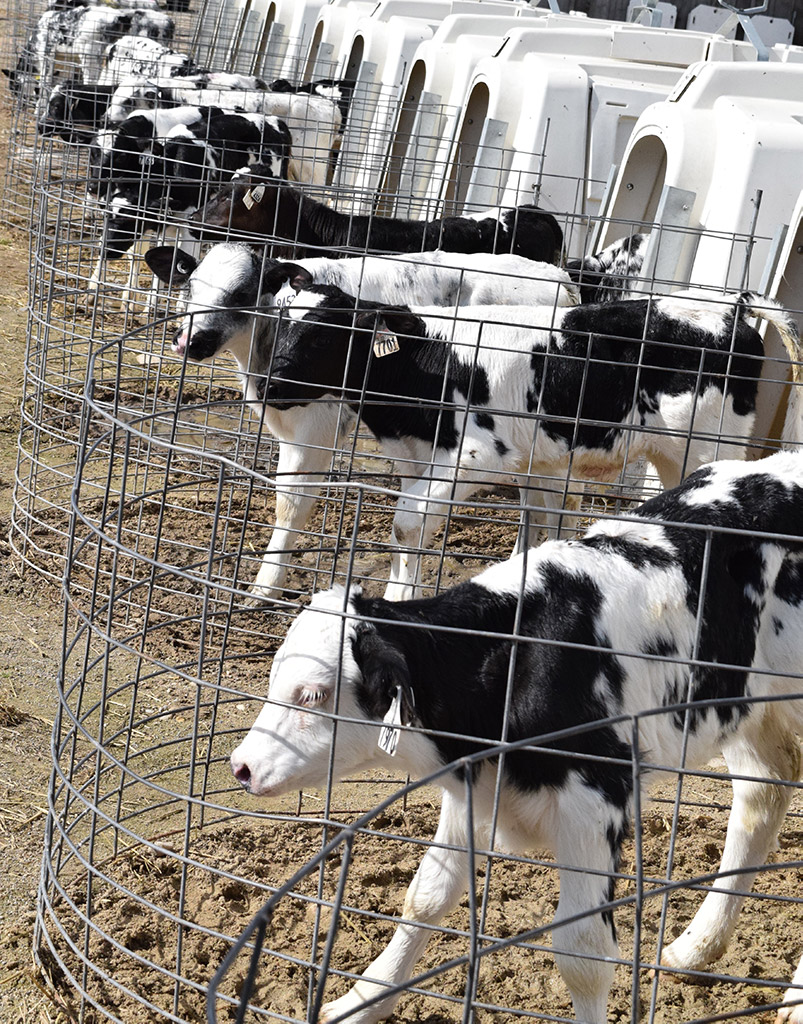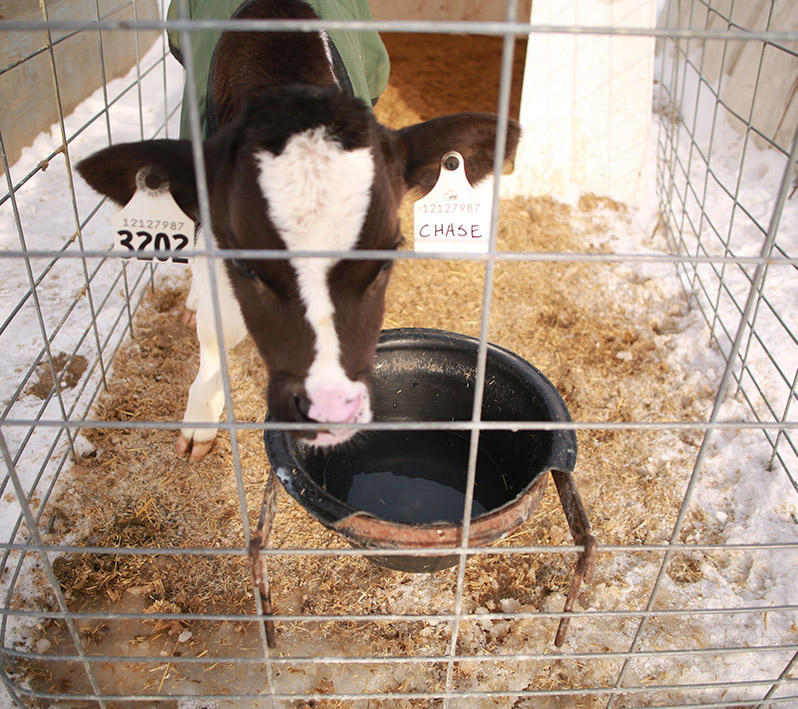Housing and hutches, changes for 2021
December 31, 2020 brought some changes for veal producers housing calves in hutches and outdoor enclosures with tethers. The Code of Practice for the Care and Handling of Veal Cattle (the Code) requirement came into effect that will no longer allow calves being started for the veal or dairy-beef markets to be tethered.
Effective December 31, 2020, calves in hutches and outdoor enclosures must not be tethered and calves in hutches must be able to access an area outside the hutch.
What exactly does this requirement mean? Likely, the first thing most producers will think of is, “I will add a bar across,”, keeping the calf in the hutch only. However, the rest of the requirement states calves must be able to access an area outside of the hutch. As the Code is outcome-based, it may be hard for some to know exactly what that means, and why it is included in the Code.
Access outside the hutch was included in the updated Code because calves are social animals and need visual contact with other calves. Providing an area outside the hutch gives the calves the ability to be able to come out of the hutch to look around at other calves. Just popping their head out and hoping their neighbour is doing the same is not sufficient to meet the need for visual contact.
The more we learn about calves, the more we can create an environment for them that meets their needs and helps them grow. Researchers are exploring new ways we can help improve the well-being of calves and allow them to express their natural behaviour. Instead of doing things the way we have always done it, by adapting our calf management as new guidelines are introduced, we are giving the calves an opportunity to have their best start in life, which we know will impact their future production, regardless of their destination.
To help visualize the area outside of the hutch, measure an eight-week-old calf from nose to tail, and add a few inches to allow for a calf of that size to step outside of the hutch and turn around, clearing all sides of the pen. To err on the side of caution, measure a bigger eight-week-old calf.
In addition to no longer using tethers, producers must ensure that calves in hutches and outdoor enclosures are able to stand fully upright without touching the top of the enclosure, lie down, turn completely around without assistance, groom, adopt sternal (resting upright on the chest with legs tucked under the body) and lateral (a resting position in which an animal lies on either side of the body with legs extended) resting postures, and have physical or visual contact with other cattle.

Calves in hutches and outdoor enclosures must be able to easily stand up and lie down, turn completely around without assistance, groom, adopt sternal and lateral resting postures, and have physical or visual contact with other cattle.
REMINDER: As of July 1, 2018, calves must be grouped as young as possible and no later than eight weeks of age.
Quite often we are asked how the requirement of no tethers came into being. The easiest answer is that our retailers are asking for veal that has not been tethered because their customers are asking for it. At the end of the day, we all are in the business of sales and supplying what customers want.
Remember, the Code is our industry standard and is in effect for all of Canada. Veal Farmers of Ontario does not have the authority to mandate the Code, however if the Provincial welfare inspector is called to investigate your operation, the standard will be the requirements in the Code. On January 1, 2020, the Provincial Animal Welfare Services (PAWS) Act replaced the Ontario Society for the Prevention of Cruelty to Animals (OSPCA) Act and all investigations are done with Provincial welfare inspectors.
As an industry we strive to improve the health and welfare of the cattle we raise. It is not easy, but it is necessary. To quote the author John C. Maxwell, “Change is inevitable. Growth is optional.”
Click here to read the Housing and hutches, changes for 2021 fact sheet.
Click here to download a copy of the Code.
